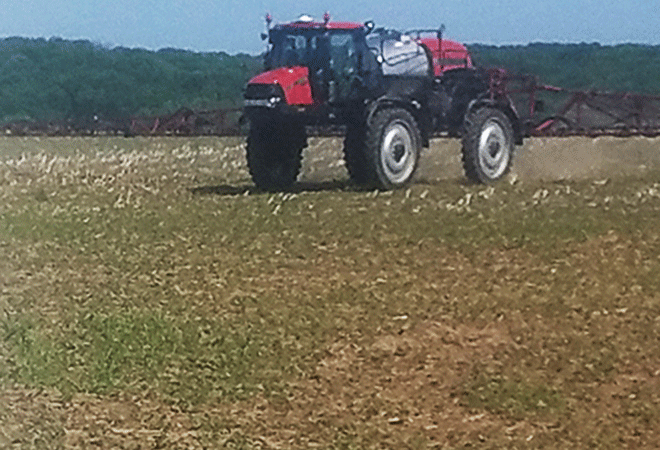Illinois Farmer Balances Herbicide Costs With Cost of Yield-Robbing Weeds
Cost is an important factor in weed control for Grant Strom, but so is employing herbicides with multiple sites of action. The Illinois farmer tries to spread out herbicides to deliver more modes of action.
“We try to keep costs in control, but we mix up our modes of action,” Strom says. “For preemergence, we want at least two modes of action as well as at least two post.”
Strom is growing Enlist E3® soybeans for seed production again this year. He sees some benefits using Enlist™ herbicides vs. other technologies.
“First is the chemistry,” he says. “It’s a better program. Liberty herbicide is great, but it’s not a complete program. Dicamba controls weeds, but it’s a pain to use.”
Strom is hoping there’s enough genetic diversity in Enlist E3 varieties to provide a range of agronomic and defensive traits to go along with top yield potential. He sees companies ramping up their lineups of Enlist E3 soybeans and incorporating the technology in more of their germplasm as a strong need.
This spring, Strom planted 270 acres of Enlist E3 soybeans for production. A rainy and cold May led to a replant situation for acres planted to dicamba-tolerant beans. He replanted those 150 acres with more Enlist E3 soybeans.
For burndown applications, he applied Surveil® herbicide, 2,4-D and glyphosate for multiple sites of action. His post application includes Enlist One® herbicide tank-mixed with glyphosate, EverpreX® herbicide for residual control and an AMS product. He wants to layer residuals, leaving no more than 45 days between pre and postemergence applications.
“With Enlist One, we’ve seen no drift or volatility,” he says. “Our Enlist E3 beans are segregated from our neighbors’ dicamba beans, but we’ve applied right up to the crop line of our dicamba beans with no issues.”
Strom prefers the Enlist system to the dicamba system overall.
“It’s less volatile, the label is less stringent, and it’s just as effective as dicamba on weeds,” he says. “The window of opportunity is so small with dicamba. And we can’t get by with Liberty herbicide alone.”
To Strom, the cost of weed control is important, but not as important as making sure he’s controlling the weeds.
EverpreX® herbicide is not registered for sale or use in all states. Contact your state pesticide regulatory agency to determine if a product is registered for sale or use in your state. Always read and follow label directions.
Surveil® is not registered for sale or use in all states. Contact your state pesticide regulatory agency to determine if a product is registered for sale or use in your state. Always read and follow label directions.
Enlist One® herbicide is not registered for sale or use in all states or counties. Contact your state pesticide regulatory agency to determine if a product is registered for sale or use in your area. Enlist One herbicide is the only 2,4-D product authorized for use in Enlist crops. Always read and follow label directions.

